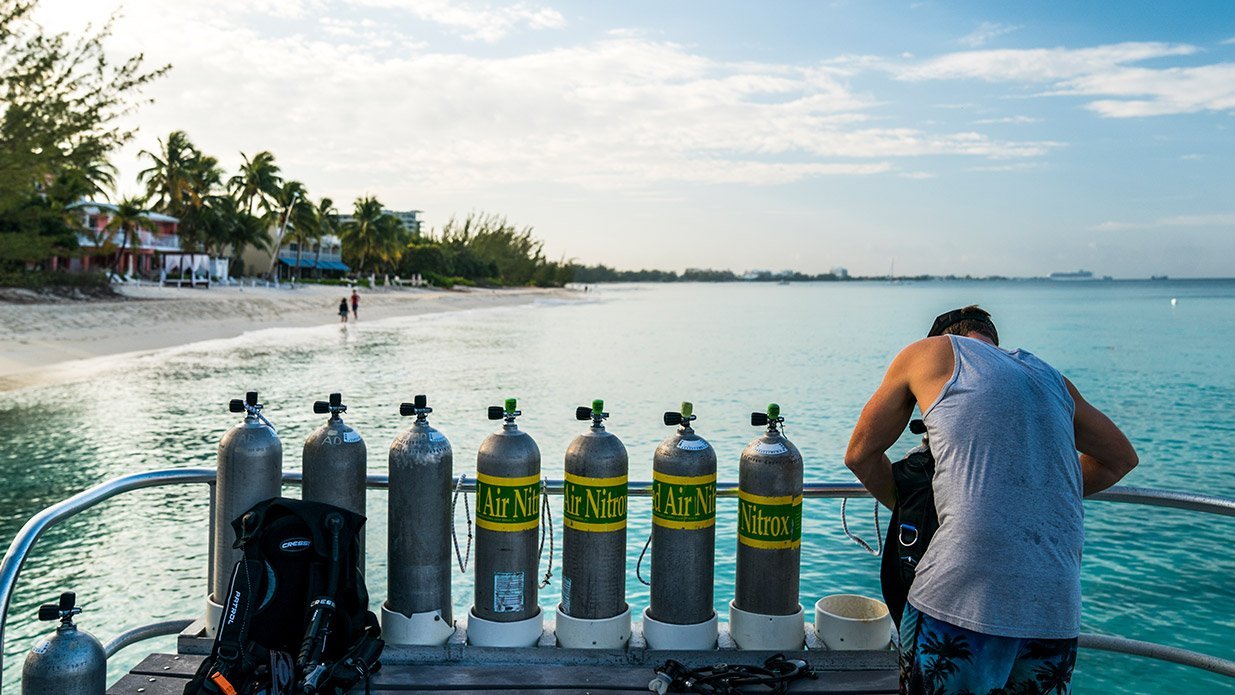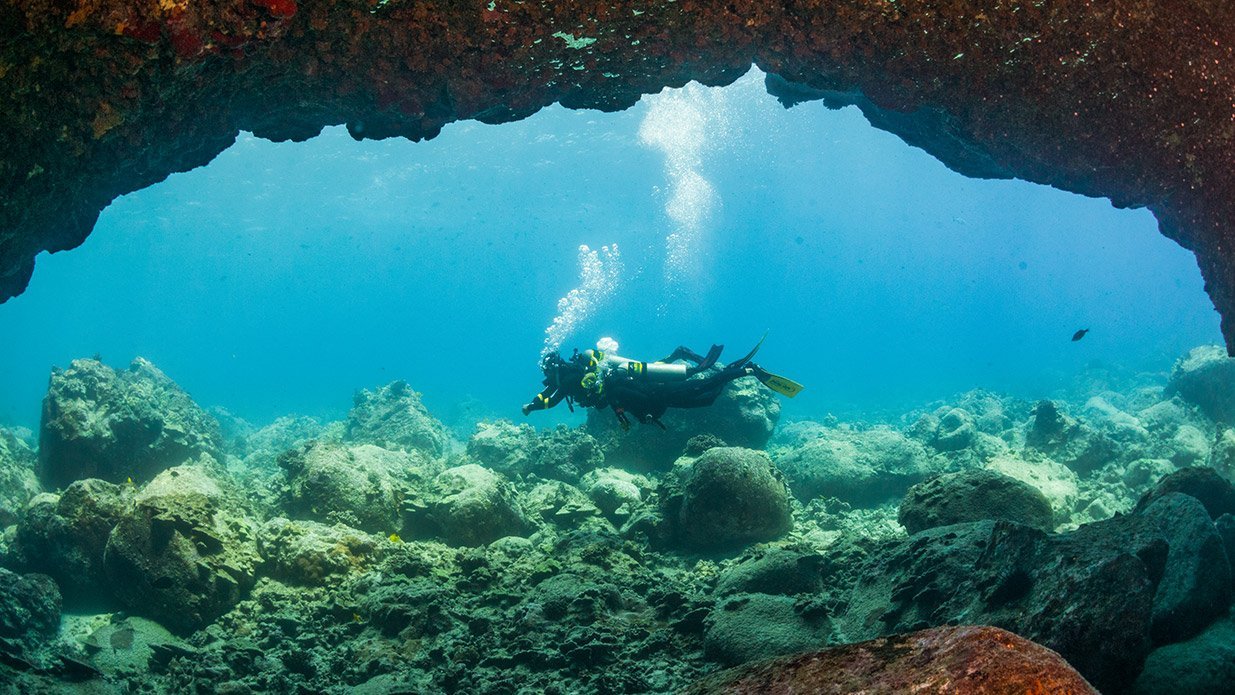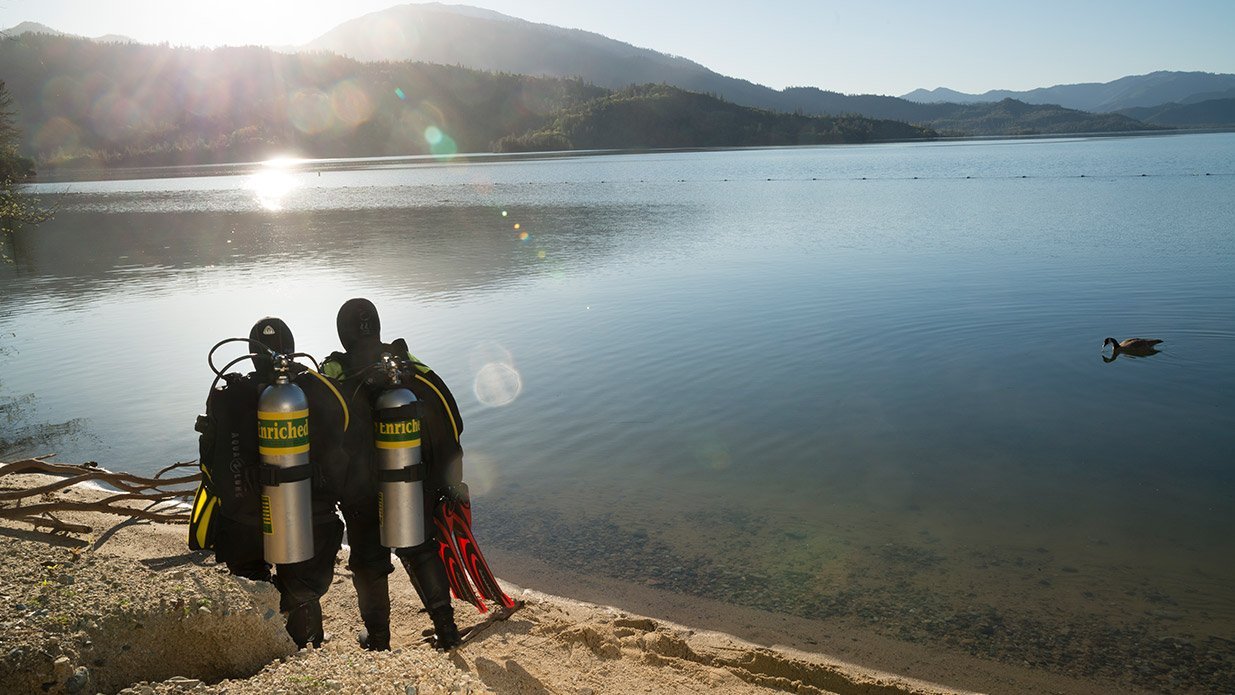Nitrox, formally known as enriched air nitrox (EANx), is a breathing gas with a higher percentage of oxygen than standard air. For this article, we will refer to enriched air nitrox (EANx) as simply nitrox, which is the most common term adopted by scuba divers in place of the more technically correct yet longer name for the breathing gas.
In recreational scuba diving, nitrox diving refers to diving with enriched air that contains oxygen levels between 22% and 40%, rather than air, which has an oxygen level of 21%. By elevating the percentage of oxygen and therefore suppressing the percentage of nitrogen in the breathing gas, divers extend their no decompression limits (NDL) by minimizing the amount of nitrogen accumulating in their bodies. This makes nitrox diving a popular choice among divers and is one of the many reasons why the PADI Enriched Air (Nitrox) Diver Specialty course is the most popular specialty course PADI offers.
In this article, we will answer the most frequently asked questions related to nitrox diving.
Nitrox diving is a type of recreational scuba diving that refers to breathing nitrox instead of regular air as the primary gas source. The elevated oxygen content decreases the nitrogen a scuba diver will absorb, contributing to extended no-decompression limits and potentially enabling longer dives (depending on the rate of air consumption). Also, nitrox may help diminish the risk of decompression sickness.
The primary application of nitrox is to facilitate longer dives by decreasing nitrogen absorption. This permits divers to dive longer without reaching no-decompression limits and helps avoid decompression sickness by reducing nitrogen accumulation within the body.

The maximum depth of dives during which the diver breathes nitrox is determined by the percentage of oxygen in the mix. Oxygen becomes toxic at high pressures, so the maximum depth for a nitrox dive is less than it would be on air for some mixes.
The two most common blends for nitrox of 32% oxygen (EANx32) and 36% oxygen (EANx36). For example, the blend containing 32% oxygen (EANx32) has a maximum depth of 34 meters/112 feet. By contrast, if on air, the maximum recreational depth limit is 40 meters/130 feet. Oxygen toxicity is one of the reasons why divers must use oxygen analyzers and calculate dive plans accordingly when diving on nitrox. This is also why it’s vital to become properly certified in the use of nitrox before using this breathing gas.
Benefits of nitrox diving include longer bottom times, shorter surface intervals, and a reduced risk of decompression sickness. These benefits become more evident for those who make repetitive dives. In addition, many people claim nitrox can help decrease post-dive fatigue and help you feel energized after dives, although there is no scientific evidence linked to this.

Nitrox has a few drawbacks when compared to air, although for many divers the positives outweigh the negatives. These disadvantages include:
The need for an additional certification course The additional costs associated with nitrox cylinder fills The potential risk of oxygen toxicity at greater depths.Yes, diving with nitrox is worth it for many divers because it provides longer bottom times, shorter surface intervals, and a reduced risk of decompression sickness.

You need to be certified as an Enriched Air (Nitrox) Diver to get nitrox fills at your local dive shop or to use nitrox during your next dive trip. In the Enriched Air (Nitrox) Diver Specialty course, you’ll learn to use an oxygen analyzer, set up your dive computer for diving with different blends of nitrox, and prevent oxygen toxicity. You’ll also get more information about specific cylinder requirements for nitrox fills and more.
For certification as an Enriched Air (Nitrox) Diver, divers need to be at least 12 years old and have completed the Open Water Diver course. Many divers combine the Enriched Air (Nitrox) Diver Specialty course with their Open Water Diver course or their Advanced Open Water Diver course. Be sure to enquire about this at your dive shop of choice.
The answer to this depends on your diving goals. Nitrox is probably a better choice if you want longer bottom times and shorter surface intervals when making repetitive or deeper dives. But diving air may be more suitable if you usually make shallower dives and/or want to avoid the additional training and fill costs.

Although nitrox has several benefits for divers, it needs special training and certification to be used safely. The PADI Enriched Air (Nitrox) Diver Specialty course is designed to help you gain the knowledge and skills to safely use nitrox during your dives. This course covers everything from analyzing cylinder contents to planning dives with enriched air. The course can be completed dry and almost entirely online, although two optional and recommended dives are usually offered.
If you want to increase your bottom time and have shorter surface intervals between dives, the PADI Enriched Air (Nitrox) Diver Specialty course is your next step toward fun and exciting underwater exploration.
Start the PADI Enriched Air (Nitrox) Diver Specialty Course Online Now
Share This
